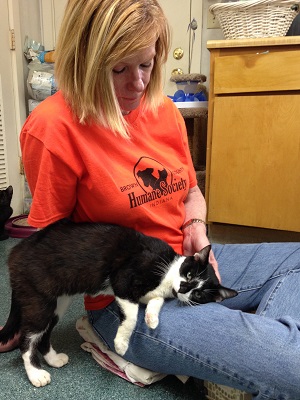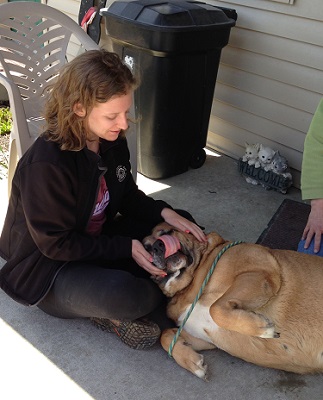T he term “No-Kill” means different things to different people and there is no certifying body that bestows the No-Kill label.
he term “No-Kill” means different things to different people and there is no certifying body that bestows the No-Kill label.
There are two common definitions of a No-Kill shelter.
The first definition is: A shelter where all healthy and treatable animals are saved. Unfortunately not everyone agrees on what a “healthy and treatable” animal is. For example, some organizations euthanize cats that have Feline Leukemia virus because they deem them “untreatable” whereas, other organizations, including the Brown County Humane Society, treat and find homes for those cats. One organization wouldn’t count those cats in their statistics, while others do.
The second common definition is: A shelter with a 90 percent “live release rate” — meaning that nine of every 10 animals admitted leaves alive”. (Some organizations define it as 95% live release”.) This definition is easily measurable, but even then it’s difficult to apply because, again, not every shelter measures their statics in the same way.
 No matter the definition, the ability to attain No-Kill status varies drastically depending on the type of organization. For limited-admission shelters that only accept the animals that they know they can find homes for, this is easy. They selectively choose which animals to admit based on their resources.
No matter the definition, the ability to attain No-Kill status varies drastically depending on the type of organization. For limited-admission shelters that only accept the animals that they know they can find homes for, this is easy. They selectively choose which animals to admit based on their resources.
Organizations that are bound by contract or government regulations and must accept every animal brought to them are referred to as open-admission shelters. For those organizations, becoming No-Kill is a bigger challenge.
Municipal shelters are usually dependent on funding from their local government, based on taxes, yet they are required to take in every animal, regardless of space, health, or finances. It can be more difficult for these shelters to reach No-Kill status because they have less control over their budget, their space, or the number of animals they take in.
 The Brown County Humane Society is a private, non-profit shelter with a contract with the local law enforcement that requires us to take in every cat or dog from Brown County that comes to us. Therefore, we are an open-admission shelter and we meet both definitions of No-Kill.
The Brown County Humane Society is a private, non-profit shelter with a contract with the local law enforcement that requires us to take in every cat or dog from Brown County that comes to us. Therefore, we are an open-admission shelter and we meet both definitions of No-Kill.
The live release rate at BCHS has been above 95% for over eight years (and over 97% for five years). We have programs in place to treat sick and injured animals. Old animals are given the chance to be adopted. Those too sick for adoption are placed into foster hospice homes. Tiny kittens and puppies are placed in foster homes where they can be cared for around the clock. Behaviorally challenged animals are worked with by knowledgeable staff or transferred to other organizations with training resources.
 At the Brown County Humane Society animals are only euthanized if their pain cannot be managed, if they aren’t enjoying their lives, or if they are too dangerous to live safely in society and no safe place can be found for them.
At the Brown County Humane Society animals are only euthanized if their pain cannot be managed, if they aren’t enjoying their lives, or if they are too dangerous to live safely in society and no safe place can be found for them.
Until or unless there are industry-wide standards put in place that are followed by all shelters, it will always be a challenge to compare shelters to determine true No-Kill status. Instead, we should focus our efforts on supporting those shelters that are doing everything they can with the resources they have to save all of the animals in their care and working to achieve the best outcome for every animal, regardless of health or age.
